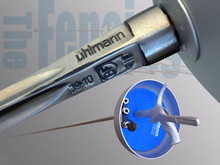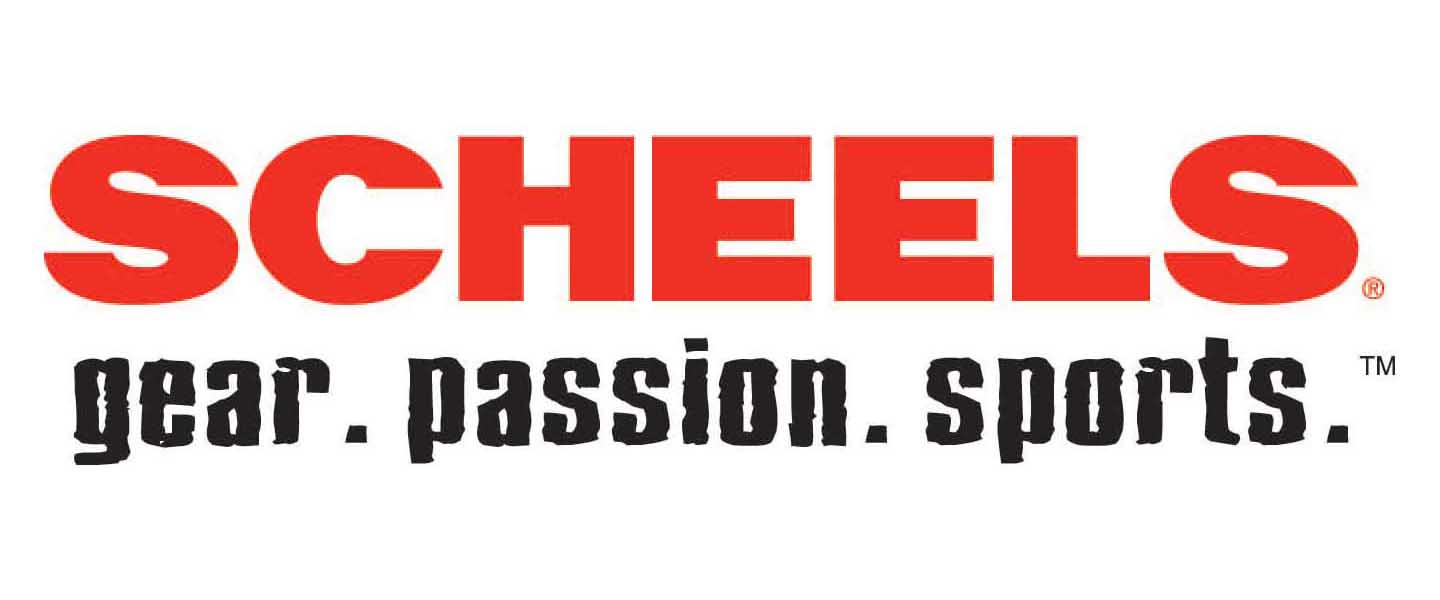The FMFC waives the rental equipment fee for those students that have their own jacket, mask, and electric weapon.
This is just a list of recommended equipment by the coaching staff of the Fargo-Moorhead Fencing Club (not a list of requirements).
The competition requires two weapons, two body cords, an underarm protector, pants, jacket, mask and a glove (plus a lame for foil). Each vendor has it's own sizing for gear so be sure to refer to the sizing charts at each online store.
Fencing is blessed with relatively unsophisticated equipment requirements. It is possible to fence a large selection of tournaments with equipment that costs under $250. Unfortunately, fencing is also cursed with very little real information on how to select, purchase, or evaluate the equipment you need to fence. This is a quick guide to buying equipment for your first lesson or tournament.
When you start to purchase equipment, you will often hear fencers talk of "FIE" equipment and "non-FIE" equipment. FIE stands for Federation International d'Escrime, the international organization that governs our sport. When fencers speak of FIE equipment, what they are really referring to is an FIE homologated piece of equipment. That means that the manufacturer has submitted samples of the equipment to an independent testing lab, and the equipment has been tested to rigorous standards, as set by a commission of the FIE. If the equipment meets these standards, the lab then certifies this equipment, and the manufacturer agrees to continue to produce the equipment the same way in the future. It is understood that any changes to the process of manufacturing the equipment require the equipment to be re-submitted. Naturally, this testing process is very expensive, and FIE equipment is the most expensive line of equipment available from any maker.
Non-FIE equipment may conform to many of the same standards as FIE equipment and may surpass some of them (if you believe the manufacturers). The equipment is "non-FIE" because the manufacturer has not submitted samples to be certified – usually due to the expense and time involved in the testing. Even non-FIE clothing (including masks) is usually required to meet a certain standard of durability to prevent injury. For the beginner, FIE clothing, with its additional expense, is probably not a wise purchase.
The United States has determined that the difference between FIE and non-FIE gear is minimal, and does not require FIE gear for national and local competitions. That may change, but for now, non-FIE gear is still legal for competition in the United States.
Fencers need a variety of equipment to compete in a competition.
| 1. | A clean jacket in good repair (For National tournaments, the jacket, lame, or knickers MUST display the last name of the fencer). |
| 2. | A mask free from rips, tears, holes, or dents. The mask must pass a test to show that it can resist a blow to the mesh of a minimum force. |
| 3. | A glove for the weapon hand that covers at least halfway up the forearm. |
| 4. | Fencing knickers (sweat pants, warm-up pants, or jeans are NOT allowed). The jacket must overlap these knickers by 10 cm. |
| 5. | An underarm protector (sometimes called a plastron) for the weapon arm. |
| 6. | Rigid breast protection for female fencers. |
| 7. | Tall socks that overlap with the bottom of the knickers. |
| 8. | Shoes – any sort of cross-trainer or court shoe (special shoes are made for fencing, but they are expensive). |
| 9. | At LEAST two working "electrical" weapons. |
| 10. | At LEAST two working body cords (electrically connect the weapons to the scoring machine). |
| 11. | For foil and saber: a lame in working order (the metal jacket that goes over the fabric jacket). |
| 12. | For saber: a metallic over-glove (sometimes this is built in to the regular glove). |
JACKET
There is FIE, and everything else. The USA does not require FIE jackets and knickers. If you will be fencing many competitions or fencing in Canada, buy an FIE uniform: it is good protection and wears like iron. The next choice, if the expense of FIE is daunting, is stretch nylon. Nylon uniforms offer less protection, but they are more comfortable, and nylon wears well. Lastly, cotton or duck jackets are available. They wear out quickly, get dirty faster, and shrink when washed. But cotton/duck is cheap, and many fencers find it more comfortable. If the jacket is to be used only for a short time – by a growing child, for example – this may be the best choice. No matter what uniform you purchase, buy a front zip jacket, and remember to specify on the order whether you are right-handed or left-handed. For safety reasons, the seam on a fencing jacket is offset to one side or the other, so there will not be a weak zipper seam facing an opponent's weapon.
Wash your uniform regularly, or plan on being unpopular at the club! For longest wear, wash normally, but do not use a dryer, hang dry it instead. Consider using Scotch Guard™ or one of the other fabric protectors around the neck and cuffs, where the jacket will get the dirtiest.
| BEGINNER | BEGINNER | ADVANCED | ||
 |
 |
 |
||
|
Mens Jacket - Linea $63.2 Available at http://stores.thefencingpost.com |
AF Jacket 350 Comfort $58.00 Available at absolutefencinggear.com |
FIE Uhlmann Royal Mens Jacket $188.80 The FIE series is required forInternational events. It is an excelent piece of equipment. Available at several stores such us absolute, thefencingpost, etc |
MASK
The most important part of your equipment is the mask. All masks sold in the US must now pass a test before being used in competition: the 14K-punch test. Armorers at every tournament will perform this test; the armorer at your club may also perform it, if you are lucky enough to have an armorer at your club. If both masks must pass the same test, what is the difference between FIE masks and non-FIE masks? FIE masks have a stronger bib, often made of ballistic nylon or kevlar. Non-FIE masks can be as strong as an FIE mask, but usually, wear much faster. If you are considering purchasing any piece of FIE equipment, the mask should be your first purchase.
Have your mask checked regularly with a punch test. When it fails the punch test, or the bib develops large holes or tears (very small rips can be mended with dental floss) destroy the mask. Do not use a weakened or damaged mask as a "practice mask". More fencers are injured in practices than in competitions!
An additional note: for those fencers who intend to fence saber in competition, a special mask – completely covered with a conducting material – is necessary.
Many masks are sold with removable liners which can be pulled out and washed separately from the mask. If you have sensitive skin or are prone to breaking out, this might be a good choice when purchasing a mask. These masks are slightly more expensive than "on-piece" masks, however.
| BEGINNER | ADVANCED | |
 |
 |
|
|
AF Epee Beginner Mask $45.00 Available at absolutefencinggear.comThere are similar epee/foil masks available at other stores. They must be 350N certified. |
Uhlmann FIE mask $170 Available at several stores such us absolute,thefencingpost, etc FIE certified, so it stands 1600N |
WEAPONS
You may, as a beginner, purchase an "electrical" weapon for taking lessons or work in class. No matter what type of weapon you buy, each type comes with an array of possible blade and grip choices. This is one area where people have the most questions, and it's difficult to make hard and fast recommendations. What one fencer considers the ideal blade and grip, another won't touch.
As with everything else discussed in equipment, there are FIE blades (made of "Maraging" steel – a special steel forged to resist breaking) and everything else. FIE blades tend to be more consistent quality, stiffer, and last longer. But this comes at a considerable price Often FIE blades are two, or even three times the price of a non-FIE blade by the same manufacture and there is no guarantee that these blades will last longer than the non-FIE one. FIE blades will also only be available set up to take advantage of the electrical scoring apparatus.
When selecting a blade type for your weapon, your best choice will be a mid-priced, non-FIE blade from the manufacturer.
Grips are another matter. Many fencers try two or three grips before they settle on one that they like. Remember that grips are usually inter-changeable between weapons, and that any French grip blades that you have can be modified to fit into the pistol grip you decide on in the future.
Electrical foil and épées have tips on the end of the blade which are part of the scoring apparatus. As with grips, there is an astonishing number of different tips on the market, each with their advantages and disadvantages, too many to go into here. Again, ask your club mates what tips they use, and why.
EPEE
| BEGINNER | BEGINNER | ADVANCED | ||
 |
 |
 |
||
|
STM Color Epee Pistol Grip $66.00 Available at Absolute Fencing GearRecommended with light guard and small/med visconti grip. |
$65.00 Available at Absolute Fencing GearRecommended with light guard and small/med visconti grip. |
FIE Uhlmann BF Electric epee $176 The FIE series is required forinternational events. Available at several stores such us absolute, thefencingpost, etc |
FOIL
| BEGINNER | ADVANCED | ADVANCED | ||
 |
 |
 |
||
|
STM Electric foil* $60.00 Available at Absolute Fencing GearRecommended with visconti grip same size as glove's size. German point with LP bayonet socket. |
Leon Paul Electric Foil* $101.00 Available at thefencingpost, LeonPaul, etc. Recommended with visconti grip same size as glove's size. German point with bayonet socket. |
BF Electric Foil* $128 The FIE series is required for |
*point from different vendors may not be interchangeable
GLOVE
A glove should overlap the cuff of the jacket by a considerable amount, reaching up to about half of the length of the forearm. There is a wide range of gloves to choose from, but consider that the glove is going to take a considerable amount of abuse. The new synthetic "washable" gloves are a big improvement over the old leather gloves. Some fencers like the feel of a leather glove, but they are hard to care for, and often do not wear well. Gloves will be the fastest-wearing piece of your uniform. Plan on having to buy one every year if you fence a lot, and chose accordingly.
| BEGINNER | ADVANCED | |
 |
 |
|
|
Absolute Standard 3-Weapons GLOVE $18.00 Available at Absolute Fencing Gear |
Uhlmann Washable glove $40 Available at several stores such
us absolute, thefencingpost, etc
|
In order to compete in USFA events 2 electric weapons are required as well as 2 body cords and fencing pants.
KNICKERS
| BEGINNER | BEGINNER | ADVANCED | ||
 |
 |
 |
||
|
Linea Mens Pants - Strech poly $51.20 Available at Ebay from |
Absolute 350 Comfort $38.00 Available at Absolute Fencing Gear |
FIE Uhlmann Royal Mens Pants $123.20 The FIE series is required forInternational events. Available at several stores such us absolute, thefencingpost, etc |
BODY CORDS
For epee the connector is a three-prong standard cord. Foil the body cord has to match the weapon connector, if the weapon is bayonet the body cord has to be bayonet. If the weapon is 2-prong the body cord has to be 2-prong.
In the case of épée and foil, the electrical weapons score with a tip on the end of the weapon which acts as a "switch". With a saber, the entire blade forms part of the scoring apparatus. For épée and foil, a wire or wires run from the scoring tip to a plug, or socket, behind the guard. In saber, a socket is also used, but as it makes contact with the blade of the weapon, there are no wires in the weapon itself.
Body cords attach to the plug behind the weapons guard, run up the fencer's arm, and out the back of the jacket, where they are attached to another cable and in turn, connect with the scoring box. There are two types of body cords, depending on the type of socket being used in the weapon: the "two-prong" type, or the bayonet "type". Both types of sockets have their advantages and disadvantages, and it is not easy to change between them. When buying electrical weapons, you will be asked what socket you want putting into the weapon, which will determine your choice of body cords. At the start, it is usually best to see what everyone else in your club is using, and copy them, since it will be your teammates you borrow body cords from when yours fail!
Saber fencers will need an additional cord to make an electrical connection between the mask (which is target) and the saber lame. This "head cord" is simply a length of cord with two clips on it: one clip to the mask, and the other to a tab on the saber lame. You should have two of these, as well, though they fail much less frequently than body cords. Other than being of a certain length, and requiring soldered connections at both ends, the differences between one head cord and another are minimal.
| EPEE | FOIL | |
 |
 |
|
|
Standard Epee Body Cord $12.00 Available at Absolute Fencing Gear |
Standard Bayonet BodyCord $14 Available at several stores such
us absolute, thefencingpost, etc
|
LAME' (only for foil)
I recommend a nickel or stainless steel lame.
| BEGINNER | ADVANCED | |
 |
 |
|
|
AF 350N Comfort Underarm Protector $18.00 Available at Absolute Fencing Gear |
Uhlmann FIE Underarm Men's Protector $109 Available at several stores such
us absolute, thefencingpost, etc
|
There are several specialized fencing shoes on the market, made by Adidas and Nike. Many fencers feel that they cannot fence in anything else, even though these shoes are expensive, and do not wear well. But many fencers swear by cross-trainer and court shoes available at any sporting goods store. Avoid running shoes, which often have cantilevered heals that make lunging difficult. Shoes should fit like any other athletic shoe or cross-trainer shoe: they should hold the heel in place, give the toes ½ to ¾ of an inch to move in, and keep the fencer's foot in place when they lunge – the fencer shouldn't "fall off" the back foot. Socks must cover the complete leg, and knickers should overlap them. Don't plan on fencing a major tournament without meeting this requirement. There are fencing socks on the market, but depending on the length of your calf, basketball or soccer socks may work as well.
Jackets, Knickers, Plastrons and Gloves can be washed in a regular washing machine and then hung dry. Using dryer subjects the material to a lot of abuse, and in the case of cotton or canvas equipment, shrinkage. Do not use bleach on FIE Uniforms, stubborn dirt or stains might be lightly dabbed with bleach or a commercial spot remover (we like Wink), but washing an FIE Uniform in bleach weakens the fibers that the fabric relies on for its protection.
Blades and Body Cords. Moisture is the enemy of steel and electrical connections. Don't store your blades next to sweaty t-shirts or uniforms. The blades and body cords will rust and corrode, and your clothing will be stained. If you fence a lot, it's a good idea to rub your blades down with steel wool to remove any burrs or "risers" that serve as an entry way for corrosion, as well as invisible splinters to catch your hands and fingers when you touch your blade. Body cord connections should be checked and tightened if necessary every month or so. Cords will often develop breaks inside the insulation (where the break can't be seen) and stop functioning. The cord then has to be taken apart, cut back, and re-affixed to the plug. An armorer will show you how to do this. Blades, likewise, stop working for a variety of reasons, and must be rewired. There are several pamphlets on armoring that can be helpful to do this (it's a simple process) or one of the more experienced fencers at club can show you.
Masks can and should be rinsed frequently, and then air dried. A great deal of sweat and face oils accumulate on the mask, and failure to clean the mask regularly can result in the mask developing a bad smell, or even worse, causing skin irritation. Some masks (such as the high end Leon Paul and some Uhlman masks) have inserts that pull out that can be washed separately. If you are prone to skin irritation or breakout, a mask like this might be worth investing in. At Dominion, we've also been successful in cleaning masks by making a slurry of baking soda and water, scrubbing it onto the mask, allowing it to soak in for an hour, and then thoroughly rinsing the mask. This seems to do a good job in removing smells. If absolutely necessary, a mask bib and padding can be spot bleached to remove stains, but make sure the mask is rinsed thoroughly after bleaching, and keep in mind that bleach weakens the fibers in FIE masks.
Lame material, including masks and over-gloves should not be stored wet. Some fencers wrap them in dry towels at the end of fencing, both to protect the material and to absorb any moisture. Like any metal object, lames and lame-cover masks should not be stored with wet t-shirts or uniforms. At the very least, at the end of the day, a lame should be folded and put in a plastic bag before being stored in the fencing bag. A saber mask should be put into its own bag as well.
There are new lame materials on the market which are said to be "machine washable". Our experience with these materials is limited, so we can't attest to the manufactures claims. At the very least, once a month, a lame should be rinsed in clean water and hung to dry to remove salt crystals which can build up and cut the metal fibers in the lame. Some fencers swear by a gentle agitation in a mild soap (such as Woolite) before rinsing the lame. Do not scub the lame while washing—this increases the chance that the metal fibers on the material will be damaged.
Some of the stores that operate in the US:
http://www.absolutefencinggear.com/shopping/

















